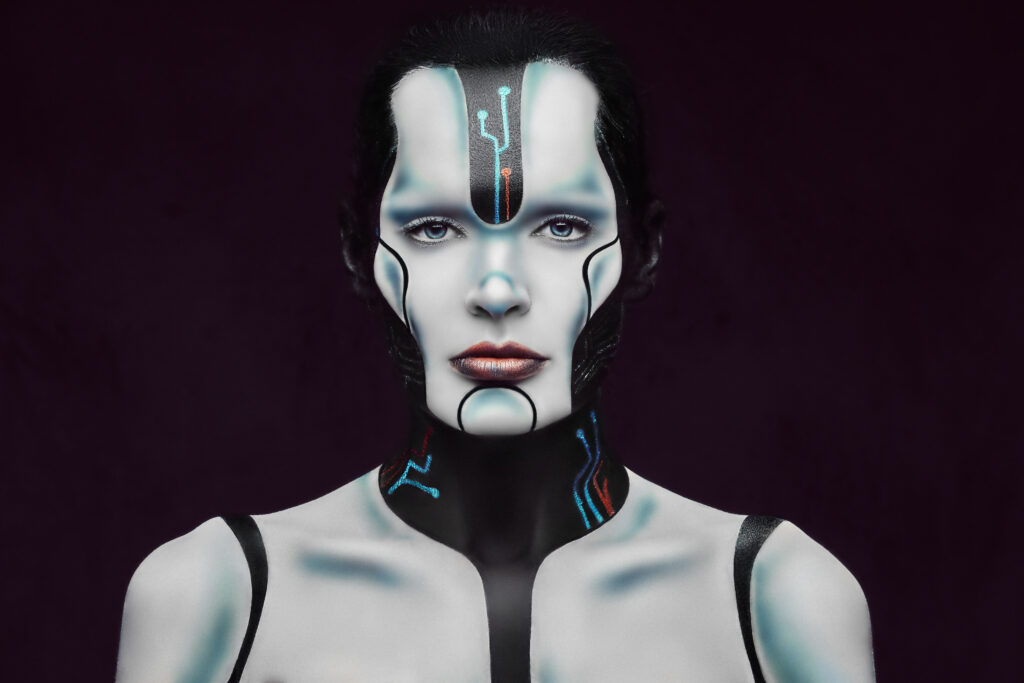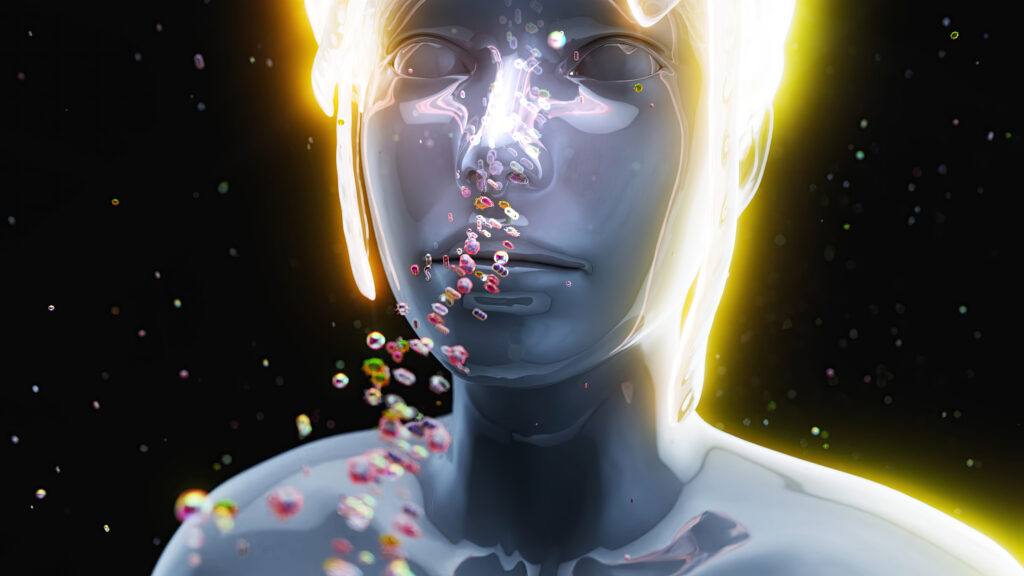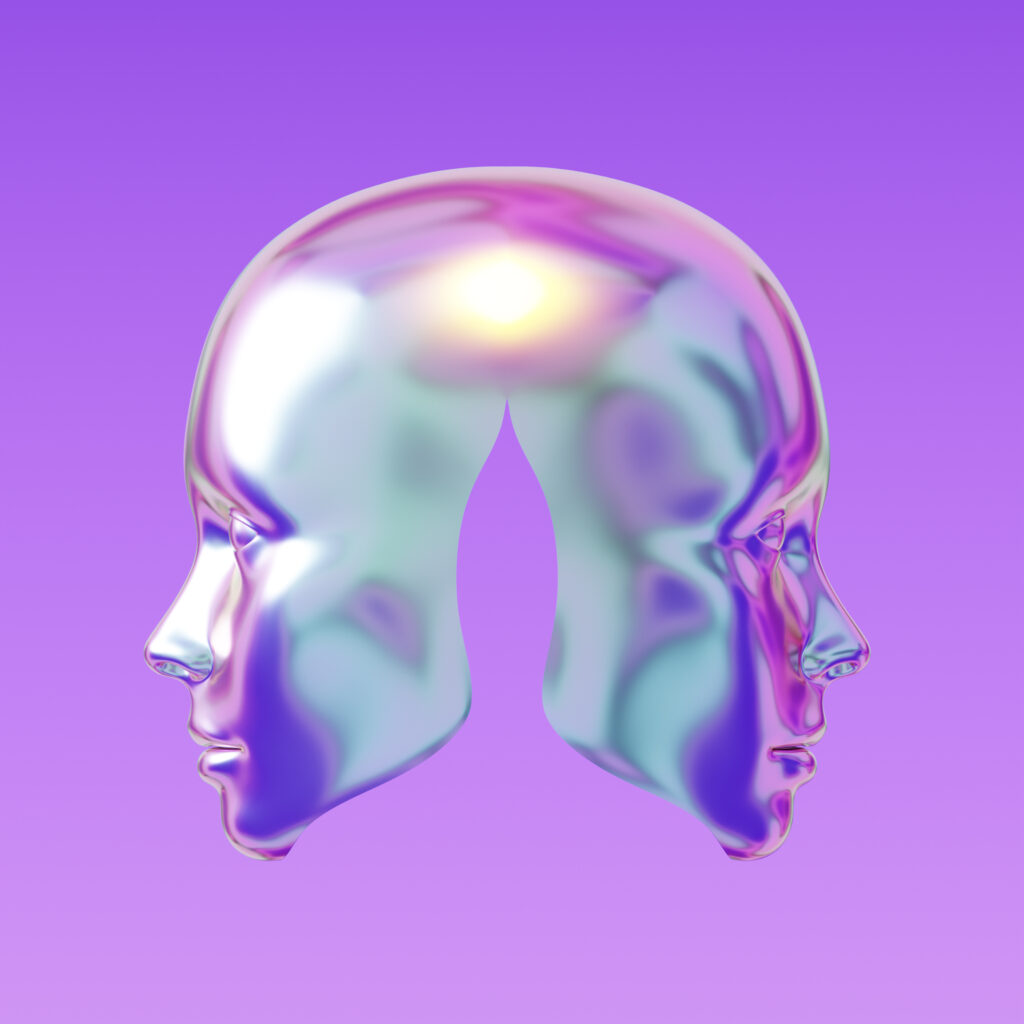Mimic Masterpieces: AI Style Generation
The introduction of AI in art has created a new space where technology meets creativity, leading to innovative ways of making art.
The project ‘Mimic Masterpieces: Generate Art With AI Style‘ reflects this blend, allowing people to create art similar to famous artists using advanced technology.
As we dive into the possibilities of AI in art, we face questions about the originality and role of artists in a world where technology is so present.
These issues make us think differently about art and encourage us to see beyond the usual limits.
Key Takeaways
The introduction of platforms like ‘Mimic Masterpieces’ marks a significant moment in the intersection of art and technology. These platforms democratize the creation of art in various styles, sparking debates on the origins of creativity, the definition of an artist, and the ethics of employing artificial intelligence in artistic creation.
As technology advances, the potential for AI to transform and enhance our creative landscape is boundless. We are witnessing the dawn of a new era in producing and perceiving art.
- Art creation becomes accessible to all.
- Sparks debate on creativity and ethics.
- Marks the dawn of a new era in art.
The Evolution of AI in Art
The advancement of AI in the art world, illustrated by tools like PaintBot’s ability to adapt various painting styles after a short 6-hour learning period, signifies a unique intersection of technology and creativity that is redefining the limits of artistic creation. This progress highlights a significant shift in how we generate art with AI, moving from simple replication to genuine innovation, giving birth to entirely new art pieces. By analyzing large image datasets and grasping the subtle details of different artistic methods, systems such as PaintBot have evolved from copying to becoming digital creators, challenging our conventional views on artistry.
AI’s ability to closely study authentic images and craft works that convincingly capture detail has attracted attention from academic circles and made waves in the commercial art scene. The sale of an AI-crafted portrait for a significant sum underscores AI-made art’s growing curiosity and acceptance. This moment marks a critical shift in art creation, with AI becoming a collaborative artist capable of producing unique artworks that carry the aesthetic and emotional richness typically associated with human works. The ongoing experiments integrating AI into tools like Adobe’s Photoshop suggest a future filled with limitless creative possibilities, heralding a new age of innovative art creation.
Understanding AI Art Generators

Exploring how AI art generators are changing the art world is fascinating. These tools use deep learning algorithms that mimic the human brain’s thoughts about art. They draw on existing art to understand and recreate intricate patterns and styles.
Understanding these generators shows us a new way to make art. The core of these generators is their deep-learning algorithms. These algorithms study a lot of data to learn how art is made. The type and variety of data they know from can significantly affect their ability to create new, appealing, and diverse artwork.
AI art generators can absorb a broad spectrum of artistic styles from their data. This allows them to make art from classic to modern, often mixing genres to create something unique. They’re changing how art is made, blending traditional techniques with new, creative expressions. This leads to the creation of art that we’ve never seen before.
AI art generators are at the forefront of a significant change in art creation. They merge technology, creativity, and innovation.
Techniques in AI-Generated Imagery

Diving into the world of AI-generated imagery shows us how technology meets creativity head-on. This innovation allows machines to mimic artistic styles with an accuracy that sometimes makes it hard to distinguish machine-made art from human-made. For instance, tools like PaintBot are trained extensively, for about six hours, on the works of specific artists. This training involves a detailed process where the AI compares its creations to the original art, learning to replicate unique artistic methods.
At the heart of these image generators is deep learning technology, which mimics the brain’s neural networks. This tech processes complex data, producing everything from entirely original art to convincingly realistic images. The fact that these AI creations can be sold at auctions for hefty sums highlights the world’s growing interest and appreciation for AI’s role in art.
The future looks bright with merging AI art tools like PaintBot into graphic editing software, including Adobe Photoshop. This suggests an era where the lines between art and technology blur even further, leading to a surge of innovative and eye-catching visual art.
The Influence of Master Artists

Exploring the world of AI-generated art, we see a significant impact from the works of great artists on the advancements in artificial intelligence in art creation. The combination of AI technology with the classic works of artists has led to new methods that enable AI to learn and create artwork that captures the historical artistry’s essence. This blend of old art forms and new technology highlights AI’s transformative role in art.
Key elements in this fusion include:
- In-depth Study: AI art programs like PaintBot spend hours analyzing master artists’ works to replicate their styles accurately.
- Continuous Improvement: The AI improves by constantly comparing its creations with the original artworks, enhancing its ability to mimic these styles.
- Innovative Artwork Creation: AI can create new pieces based on photos in the styles of famous artists like Van Gogh or Picasso, taking just a few minutes to complete each piece.
- Learning from Feedback: AI uses feedback to understand better and replicate the unique styles and techniques of master artists, showing its increasing skill and adaptability in art creation.
Through these methods, AI is not just copying but also learning and expanding the boundaries of artistic creation.
Crafting Your AI Masterpiece

Understanding how master artists inspire AI to create, let’s explore how you can use this technology to make your AI-generated art. Starting with a description of what you want, AI uses this as a guide to produce unique artwork. These algorithms can replicate various artistic styles, providing a broad canvas for your creativity.
| Step | Description | Customization Options |
|---|---|---|
| Description Input | Share your vision for the artwork to direct the AI. | N/A |
| Style Selection | Pick an artistic style for the AI to emulate. | Templates and Styles |
| Parameter Setting | Adjust elements like the color scheme and brush size. | Color Palette, Brush Size |
| Final Generation | The AI combines your choices to create the piece quickly. | Review and Adjust Parameters |
This method makes art creation accessible and ensures your piece reflects your taste. Whether selecting templates, tweaking the color scheme, or adjusting other settings, you have control over the final product. This unique blend of technology and artistry means making AI art is easy and personal for anyone interested.
In crafting custom art, these steps simplify the process while allowing for deep personalization. It’s a fresh way to approach art, removing barriers and opening up new possibilities for creativity. Through this process, creating art with AI is not just possible but also a deeply personal journey into the world of digital creation.
The Role of Machine Learning
Machine learning is the powerhouse behind AI art generation, using advanced algorithms to study and replicate various artistic styles with fantastic accuracy. By applying deep learning, these algorithms can delve into the subtleties of different artistic movements, allowing AI art generators to create pieces that closely mimic famous artists’ work. This complex process not only demonstrates the adaptability of machine learning in creating art but also shows how it could change our approach to art creation.
Critical elements of machine learning in AI art generation are:
- Pattern Analysis: Algorithms examine existing art to recognize and learn various styles.
- Deep Learning: This approach is used to precisely mimic the unique traits found in the art of well-known artists.
- Learning through Experimentation: Tools like PaintBot quickly learn an artist’s style, improving their skill by constantly testing and tweaking.
- Accuracy in Replication: The ability of AI to duplicate classics highlights the advanced skills of AI in producing art in different styles, showing the significant influence of machine learning on art creation.
These points underscore how machine learning reshapes how we view and create art, with AI art generators at the forefront of this transformation.
Ethical Considerations in AI Art
As AI technology advances, it brings innovation to the art world and sparks intense debate over ethics. Questions about who truly owns a piece of art when AI plays a significant role in its creation are now at the forefront. This issue forces us to rethink what we consider original work and who gets credit for it. The blend of human and machine input complicates ownership and authorship in art.
Transparency about AI’s role in creating artwork is crucial. It helps maintain the art community’s integrity by allowing open discussions on the value and authenticity of these works versus traditional art. This honesty is vital for appreciating the art for what it is and understanding the artist’s intentions.
Moreover, there’s a growing concern over the impact of AI on human artists. Could AI replace them, or will it open new avenues for expression? Developing ethical guidelines that safeguard human artists’ interests while fostering creativity is essential. Balancing technological progress with ethical considerations ensures that the art world remains vibrant and inclusive.
Navigating AI Art Platforms
Exploring platforms like Mid Journey for creating art with AI is about getting to grips with how they merge with other apps and their user designs to help you make the art you envision. These platforms use artificial intelligence to transform the art creation process, letting anyone craft amazing visuals from text descriptions. They’ve made it easy for everyone, from beginners to experts, to get into AI art.
To get the most out of these platforms, here are a few tips:
- Integration with Communication Platforms: Mid Journey works through Discord, so getting comfortable with Discord will help you make the most of creating AI art.
- Understanding Membership Plans: Knowing the difference between what you get for free and what a paid membership offers can change how much and the quality of what you can create. For example, Mid Journey gives you 25 images to try out for free, and paid plans start at $10 a month.
- Utilizing Community Showcases: Looking at the art others have shared can give you new ideas and help you see what’s possible.
- Customization and Usage Rights: It’s essential to know how to tweak and save your art, whether making something for yourself or commercial use.
Getting to know these platforms better means you can do more with your digital art.
Future Trends in AI and Art
Blending artificial intelligence with the creative world is reshaping how we view art. This combination is sparking debates around the ethical use of AI in creating artwork. Understanding how these two worlds coming together can challenge and enrich the art industry is crucial. By teaming up human creativity with AI’s processing abilities, we’re opening doors to innovative art forms.
This new era of art creation is not just about technology but also about the potential for unique collaborations. These partnerships between humans and machines can lead to unprecedented artistic expression. It’s essential to look closely at the hurdles and possibilities that come with AI in art. This insight will help shape the future direction of AI’s role in the art community.
We need clear, straightforward conversations about the impact of AI on art. It’s about providing context and understanding why this merge is significant rather than just stating it. Using an active voice and avoiding clichés makes the information more engaging and easier to understand. Including specific examples can help illustrate these points more vividly.
Ethical Implications Explored
The ethical questions surrounding the use of AI in creating art are becoming more pressing. These discussions often center on who owns the art, who should get credit, and what role human creativity plays in the age of machines.
Here’s what’s critical for maintaining ethics in AI-driven art:
- Clear Guidelines are necessary for how we use AI in making art. This means everyone understands the rules.
- We must use AI to support human creativity, ensuring it’s a tool that adds value rather than replacing the human touch.
- Legal Frameworks need to be put in place to tackle ownership and copyright issues, ensuring creators are protected.
- It’s essential to keep the Human Element in art, ensuring that the artist’s personal touch isn’t lost to automation.
These steps are crucial for keeping AI art ethical, protecting the unique value of artistic work, and ensuring that artists’ rights are respected.
Collaboration Horizons Expanded
Exploring the collaboration between humans and AI opens up new possibilities for artistic innovation and expression. With advancements in technology, AI algorithms can now create more intricate images, leading to a broader acceptance in the art community. This partnership between humans and machines makes art more accessible to everyone, regardless of skill level. AI-powered tools and platforms level the playing field, allowing more people to engage in art creation.
The development of AI in art is sparking creativity among those who may not traditionally consider themselves artists. It’s also bringing new ideas to the forefront of the art world. Combining human creativity and AI’s capabilities is paving the way for a future where art is more about innovation, accessibility, and working together. This shift is set to transform the art scene in exciting ways.
Celebrating AI-Driven Creativity
Celebrating AI-driven creativity in art showcases how technology merges with traditional art forms, creating new pathways for artists. This blend of AI and artistry is not just about making art differently but about imagining art in ways we never could before. It’s a testament to how AI enriches the art world, offering fresh perspectives and opportunities.
The fusion of technology with art has led to the birth of extraordinary artworks that once seemed impossible. This innovative intersection allows artists to craft pieces that stand out for their uniqueness and creativity.
AI’s ability to replicate the styles of famous artists brings a fresh appreciation for classic art styles. This technology lets us see art through a new lens, presenting familiar styles with unprecedented precision and detail.
Celebrating AI in the arts highlights how technology is not just a tool but a partner in creativity. It pushes artists to explore their potential further, leading to the creation of diverse and imaginative pieces. This partnership between AI and artists is reshaping our understanding of creativity.
The Mimic Masterpieces feature is a prime example of how AI can offer a new experience of iconic artworks. It allows people to engage with the essence of famous pieces, providing interpretations that maintain the originals’ spirit. This feature showcases AI’s adaptability in art creation, proving that technology can complement human creativity.
Frequently Asked Questions
How Does AI Mimic Art Styles?
- AI learns art styles through pattern recognition in neural networks.
- Style transfer technology allows AI to replicate art innovatively.
- Debate grows as AI challenges human creativity in art.
Can I Use AI to Generate Art?
- AI enables art creation, blending inspiration and ethics.
- Navigates copyright and commercial boundaries in art.
- Redefines traditional and digital artistry‘s limits.
How Do I Convert an Image to Ai-Generated Art?
- Transform images into art with simple tools.
- Engage creatively for unique art pieces.
- Blend technology and art seamlessly.
What Is the AI That Turns Images Into Art?
- AI transforms images, inspiring new art forms.
- Sparks debates on ethics and copyright in art.
- Reflects a leap in artistic innovation and influence.
Conclusion
Launching platforms like ‘Mimic Masterpieces’ is a big deal in the world where art meets technology. These platforms make it easy for anyone to create art in various styles. They also start conversations about where creativity comes from, who gets to be called an artist, and the right and wrong of using AI to make art.
As technology gets better, the ways AI can change and grow our creative world are endless. This begins a new chapter in how we make and think about art.